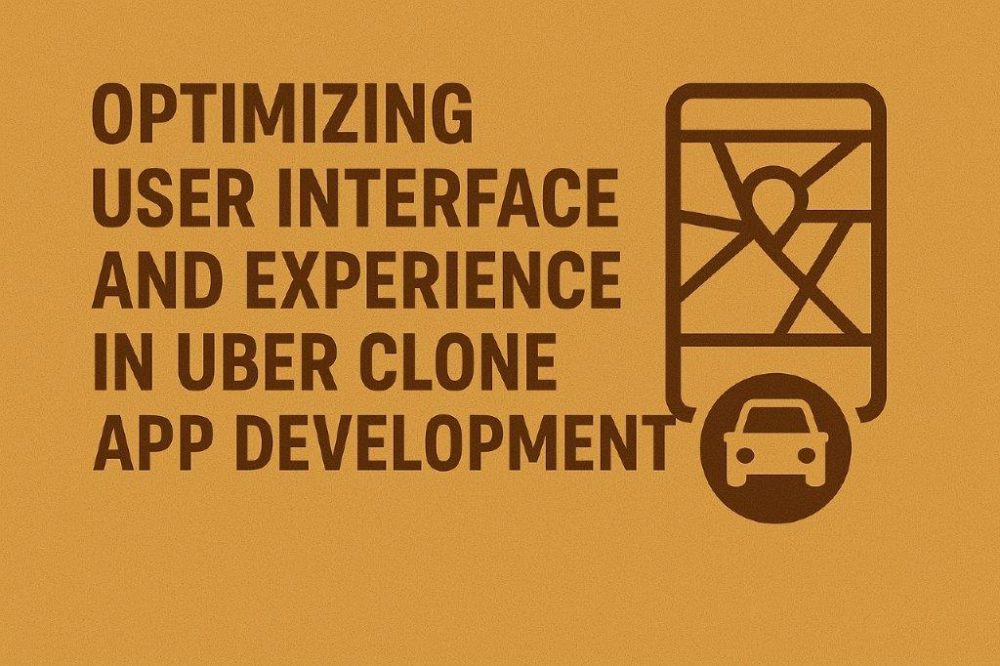Introduction
The On-demand mobility services sector, which is largely popularized by platforms like Uber, is thriving on the smooth interaction between driver, rider as well as applications itself. When developing a platform similar to Uber, success depends not only on imitating core functionality but also on optimization of the UI (User Interface) as well as UX (User Experience). An advanced UI/UX minimizes friction, builds the trust of user, and raises retention. This results in turning a copied platform into a competitive market entity. In the complex ecosystem of a ride-sharing app, prioritization of instinctive design for passengers as well as drivers is predominant.
The Imperative of Intuitive User Experience
The main goal of the UX (User Experience) is to get the user from intention to accomplishment with bare minimum effort. While for a passenger, this signifies booking a cab in the fewest steps possible.
1. Streamlined Booking Flow: The journey of a user from starting the app to checking the approximate fare as well as booking should be smooth and crystal clear. The incorporation of features such as predictive search as well as one-tap re-booking based on the user’s ride history significantly enhances speediness.
2. Real-Time Clarity with Interactive Maps: Real-time GPS tracking is considered to be an important feature, yet its presentation is still a UI challenge. The map must be clean, interactive, as well as the focus of the screen. Micro-interactions along with smooth animations for driver’s vehicle moving towards the pickup point helps in offering an essential visual feedback, which in turn lowers user concerns while confirming the ride’s progress. After booking, the driver as well as vehicle details must be clear, visible, along with being easy to access for in-app communication.
3. Frictionless Payment Gateways: Although offering several secure payment options is standard, but the UX mostly relies in its execution. Combining popular local digital wallets along with credit cards as well as cash can assist in lowering payment friction. The design must make settings for a default payment method while making switching between several payment options quick and easy, ideally completed in one step post-ride.
Optimizing the Driver’s UI/UX for Efficiency
A successful platform usually requires a happy as well as efficient driver fleet. The UI/UX of driver-side app mostly focuses on increasing earnings while lowering distraction.
1. Simplified Trip Management: The driver dashboard must be as minimalistic and action-oriented as possible. Incoming ride requests must feature a large, clear notification with sufficient time for acceptance, while also displaying the passenger’s rating as well as the estimated trip earnings. The process of accepting, navigating, as well as completing a ride must be a highly efficient and linear flow.
2. Intuitive Navigation and Analytics: Combining high-performance mapping APIs (e.g., Google Maps SDK or Mapbox) with real-time route optimization plays a very important role. The UI must be capable of offering clear, contrasting colors as well as large fonts which are suitable for in-car use. Also, an accessible Earnings Dashboard which is capable of visually tracking daily/weekly income, performance metrics, as well as customer feedback encourages driver engagement along with facilitating better service quality.
Adopting Future-Ready UI/UX Trends
Staying competitive means implementing modern mobile design trends which are capable of improving usability:
- Dark Mode: Offering dark mode is no longer just optional, rather it has become a standard, which helps in decreasing eye strain, particularly during night-time driving, along with conserving battery life.
- Accessibility and Localization: Designing with accessibility in mind (e.g., high contrast, customizable text sizes, as well as voice commands) can assist in expanding the user base. The app must also be capable of supporting many local languages along with payment methods for truly serving a target region.
- Safety Features: UI elements designed for safety, like Emergency SOS button as well as Ride Sharing feature, must be easily reachable, which in turn helps in offering peace of mind to both riders and drivers.
Conclusion
Developing a successful Uber clone application usually requires a deep commitment to superior UI/UX design. Features like an intuitive booking process, transparent real-time tracking, frictionless payments, as well as an efficient driver interface helps in forming the foundation of a positive user experience. Focusing on simplicity, responsiveness, along with incorporating modern design trends can assist developers in creating a ride-hailing app which not only enters the market but also creates a long-term, loyal user base, eventually driving the platform’s success as well as scalability.
